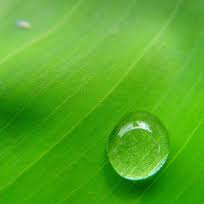How does dew form?
So, Why does dew form?
Dew forms when an object, surface or region loses heat such that it cools down to a temperature which is colder than the dewpoint of the air next to that surface. In the literature, the process of losing heat is referred to as infrared radiation. Surfaces gain the heat from the sun’s solar energy during the day.
Dew most often forms on on evenings or nights when there are few clouds, since a type of greenhouse effect is created by clouds (insulation effectively). Clouds prevent surfaces cooling via the process infrared radiation loss to outer space (space being very cold).
Calm nights are also a factor, as lack of wind contributes to dew formation whereas a windy night keeps the lowest layers of the atmosphere warmer. Wind flow may also evaporate any dew that might begin to form on surfaces.
The dew we see forming on leaves, solar modules and the roof surfaces of cars is made of liquid water that has condensed from water vapor originally present within the surrounding air.
Fog is also related to the concept of dew, and is most commonly seen in cooler mountain regions. Fog occurs when the layer of air in proximity to the ground also cools to the dewpoint temperature.
What happens when dew forms on solar panels?
Dew is repelled from the glass surface of solar panels produced by reputable manufacturers by way of a hydrophobic coating.

